Introducing Sod Into the Tanakh Classroom
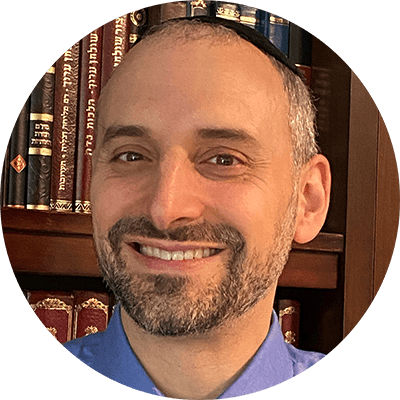
Maury Grebenau is the Director of JNTP’s Administrator Support Program. Maury taught and led Jewish day schools for 20 years and received his doctorate from Northeastern University. He has lectured and written about educational leadership, teen health, and school technology use. His articles have been published in Kappan, Principal Leadership, the Journal of Jewish Education, and Jewish Educational Leadership.
In my years of teaching Neviim and Ketuvim, one of my overarching goals was for students to gain an appreciation of why specific commentaries approached the same text differently. I spent significant time on both peshat and derash approaches, highlighting the strengths and weaknesses of each interpretation’s handling of textual issues. One experiment with introducing sod resonated deeply with some of the students and complemented the other work we were doing. I share that experiment here.
Sod (literally, secret) is a mode of hermeneutical interpretation that sees the characters and storyline as being symbolic of fundamental themes. Although definitions of sod usually include mysticism, the relation to Kabbalah is only that sod reflects an interpretation that directly addresses giving insight into our relationship with God and how He runs the world.
My Sod Experiment
My motivation for this experiment was multifold. First, sod exists as one of the lenses for studying Torah and I thought that it would be important for students to have at least some exposure to it. Second, I was hoping that through looking at the prism of sod my students would appreciate an additional facet of textual analysis that would deepen and broaden their appreciation of different approaches to textual issues. Their broadened perspective would also deepen their appreciation for approaches we had already studied by highlighting how sod approached issues we had already examined through the lenses of peshat and derash. Finally, I hoped to bring larger questions about our mission in this world and the tension between body and soul into the class discussion.
After spending a few months learning Sefer Yonah every day with a co-ed class of upperclassmen in a Modern Orthodox school, I introduced the concept of sod using an interpretation of the book of Yonah offered by R. Eliyahu of Vilna, the Vilna Gaon. He sees the whole book of Yonah as an allegory for each human soul (represented by Yonah) that becomes distracted from its God-given mission and runs towards the temptations of this world.
Students were given a handout that had the first chapter in English and Hebrew as well as a key at the top which explained how the Vilna Gaon explained the symbolism in the chapter. After a brief introduction to sod and an explanation of his basic thesis, students were asked to reinterpret each verse using the Vilna Gaon’s prism. The same process was completed with the second chapter followed by a discussion of what students had learned about this approach to the book of Yonah and of sod in general. This process facilitated a critical analysis of how thoroughly the sod interpretation integrated into the entirety of the text parallel to similar evaluations of peshat and drash.
Results
Some students were blown away. They had been shown a completely new system of interpretation which yielded a deep and impactful idea in a text they thought they already knew well. Many of them were excited and wanted to know when we would have our next encounter with this kind of learning.
A few students were overwhelmed and uncomfortable with a hidden meaning lurking beneath the story they had spent months trying to understand. Having struggled with the question of why Yonah would run from God and learning several clear approaches, their understanding was now confused by learning that it might be symbolic of our soul shirking its spiritual responsibility.
Spending just two days on this approach felt like a good decision. For those who struggled with this approach, I assured them that they would not be tested on it and that they did not need to dive any deeper than their comfort level allowed. For those who were excited, I had piqued their curiosity and helped them develop another connection to Tanakh study. I contacted one of my former students who I remembered being particularly excited by this approach and asked if he remembered the class. He responded that he did and that it must have been pretty impactful if he still remembered two days of high school Judaics some fifteen years later. For students who appreciated the approach, it served to cement their understanding of the book as a whole and brought the peshat and derash approaches into sharper relief.
Another Example
There are multiple sod interpretations offered by a range of commentaries. One is Rav Ovadia of Bartenura’s commentary on Megillat Rut. He interprets the narrative as symbolizing God’s (Boaz’s) redemption of the Jewish people (Rut). In addition to facilitating a discussion of national redemption and understanding exile, looking at specific verses can enhance an understanding of other approaches to the text.
After working with peshat and derash on Rut 3:12-13, presenting different approaches to the word tov and the seeming repetition in these verses, R. Ovadia’s sod lens reads these verses as describing two ways for the Jewish people to experience redemption. One is through God’s intervention, the other is a “closer” self-redemption which is the product of the nation amassing sufficient good (tov) deeds and earning a quick redemption.
Planning Sod in Your Classroom
When preparing to use sod in your classroom, there are a number of areas to consider. First, your own comfort and knowledge with it, especially given that this is an area that many did not experience in their own education. It will be important to deepen your own understanding as well as figure out how to frame this approach for the students. You will also need to be prepared to respond to student questions that will arise.
Second, you must consider the degree of focus and time you want to spend on this approach. Will this be a large unit or a relatively short one spanning a day or two? Will the students be able to see the approach work its way through the verses or just be introduced to the general idea? Will it be presented side by side with peshat and derash or brought in at the end, when the students already have a clear picture of the text they are studying?
Finally, and most importantly, you must clearly identify your own goals, which will inform how you structure the lesson. I intentionally gave students the task of reanalyzing the text through a new lens in order to focus on the use of sod as textual interpretation. We spoke briefly about the larger questions that were brought up at the end of the lesson, but the focus was on interpreting the text.
Vilna Gaon’s interpretation of Yonah and similarly Bartenura’s interpretation of Rut are good examples of a sod interpretation of an entire sefer that represents an encapsulated narrative that students know well. I believe this is a good way to introduce sod since it allows students to quickly understand the new approach overlaid onto a narrative they are very familiar with.
Conclusion
In my own education, I had heard the terms remez and sod but had no real exposure to them. There are real benefits to bringing some exposure to sod in our Tanakh curricula. Sod can be effectively used to deepen and broaden students’ appreciation and understanding of textual interpretation and introduce some of the deeper questions of religious engagement into Tanakh study. My own experience teaching sod in high school leads me to believe that it has potential for meaningful added value for the religious experience and understanding of our students.

Maury Grebenau is the Director of JNTP’s Administrator Support Program. Maury taught and led Jewish day schools for 20 years and received his doctorate from Northeastern University. He has lectured and written about educational leadership, teen health, and school technology use. His articles have been published in Kappan, Principal Leadership, the Journal of Jewish Education, and Jewish Educational Leadership.

From The Editor: Winter 2025
It is one of the oldest literary collections ever written and still very much in circulation. Public readings (and celebrations) of its text are practiced in nearly every synagogue in the world in a regular, fixed cycle. It has been analyzed and studied by religious luminaries, academic scholars, and lay people, and has been studied and taught more times than we can count, with hundreds if not thousands of published commentaries. It plays a central role in all of our lives. One would think that by now we would have a pretty clear idea of what content from Tanakh should be taught and how it should be approached pedagogically at various age levels. And yet, a mountain of anecdotal evidence reveals that there is a huge range in what is taught, why it is taught, and how it is taught.

Tanakh Hats for Meaning Making: A Multi-Perspective Approach to Biblical Text Study
In our ongoing quest to enhance Tanakh education, we’ve developed a fresh approach that energizes both teachers and students while promoting diverse interpretations, critical thinking, and collaborative learning. Inspired by Edward de Bono’s Six Thinking Hats, this method encourages learners to view Tanakh texts from multiple perspectives, offering deeper understanding and fostering connections between foundational Jewish texts and modern life. The Tanakh Meaning Making Hats (TMM Hats) approach equips students with various interpretive tools to explore familiar perspectives and discover new ones, building understanding through both familiar and novel frameworks. This method, grounded in constructivist learning theory, enables students to construct knowledge actively, allowing them to examine texts from varied angles.

From Consumption to Production: Equipping Students to Create Torah
In the realm of Tanakh education, there is a tendency to focus on the consumption of Torah knowledge, where students engage in the study, understanding, and analysis of sacred texts. While amassing a critical base of knowledge is undeniably essential, I believe that shifting from students-as-consumers to students-as-producers—in which students not only absorb the teachings but also create and contribute their own interpretations and insights that can be shared publicly—is equally essential. How can we teach students to produce a deep analysis of Torah and not just consume others’ commentary? How do we encourage students to think for themselves while teaching other valuable lessons in the process?

Innovating Teaching Tanakh
What I observed one day in my visit to an English Language Arts (ELA) classroom last year opened my mind to completely new ways of teaching Tanakh, leading to greater student engagement.I work at a pluralistic elementary school that emphasizes growth mindset and continued development for each educator. One specific policy that helps educators learn from each other is the requirement to visit at least two other classrooms every semester. This routine fosters a genuine culture of professional growth, where teachers share ideas, observe varied teaching methods, and offer constructive feedback. I’ve always found these observations beneficial, but one visit left a lasting impact on my approach to teaching Tanakh. Stepping into Mrs. Michelle Petrova’s 6th grade ELA classroom, I was greeted with an incredibly vibrant atmosphere.

Teaching the Halakhic Sections of the Torah
Much of the discussions we find about teaching Humash focus on the narrative portions—Genesis, the story of the Exodus, the wanderings in the wilderness. To a large extent that makes sense, as they provide students with their origin stories—so critical for building the foundations of identity—and are inherently interesting, as stories tend to be. That being said, there is another half of the Torah, whose nature is primarily legal. While some skip it intentionally or somehow “don’t get around to it,” for others it is no less important to teach, even though the content often doesn’t lend itself easily to grab and hold the students’ attention. As with any teaching, we must first identify what we want to achieve before we can think about how we want to do it.
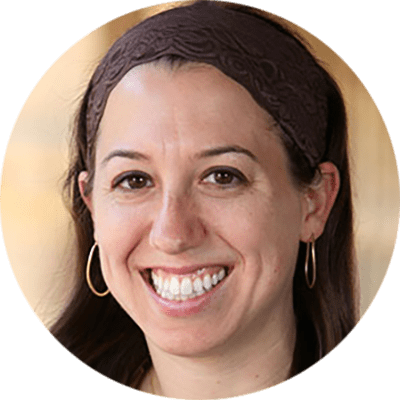
Teaching Tanakh: A New Perspective on Pedagogy
As many teachers of Tanakh know, the Tanakh classroom serves as a crucible for interpreting sacred texts, particularly in theologically and denominationally diverse day schools, camps, and beit midrash settings. The question I wish to explore here is: how do Jewish educators navigate the complex landscape of multiple orientations towards Tanakh that they might find in the seats of their classroom and make sure to empower all their students as interpreters? Central to my own Tanakh teaching, at almost every grade level, in almost every type of day school context, is the realization that my students don’t read Tanakh according to the same orientations or literacy practices, but it would be helpful if they did—at least for the duration of my class.
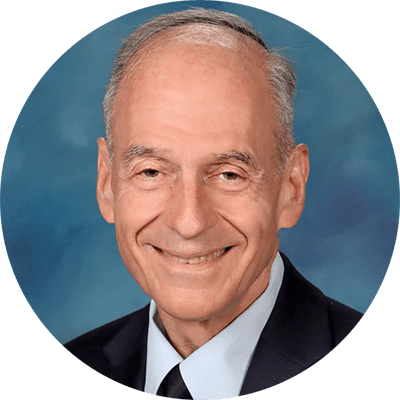
Tanakh Study and Reader Response
“My students insist on translating every pasuk (verse) into English and then using their translation to answer the questions. How can I get them to work from the makor (original text)?”“When I give in to their learned helplessness and teach them an interpretation, they can’t identify the problem in the pasuk that the interpretation comes to solve, and then they get stuck on the one understanding I presented and won’t consider an alternative. How can I help them think for themselves?” “I want my students to identify with the avot (patriarchs) and imahot (matriarchs) and learn from their example. But they somehow can’t relate to them as role models. What am I doing wrong?”Sound familiar? For years these complaints were a constant refrain from my Tanakh-teaching colleagues.
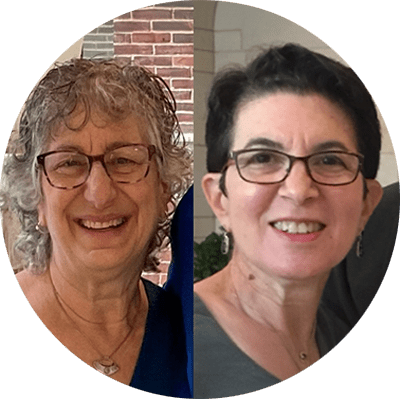
Vision, Lenses, and Focus: Bringing Clarity to Tanakh Curriculum with Standards
Any Tanakh text, whether narrative or legal, contains an abundance of ideas, elements, and complexities, and has the potential to raise countless questions. How does a school community decide which of them to pursue?Nechama Leibowitz, quoted by Shmuel Peerless in To Study and to Teach: The Methodology of Nechama Leibowitz, wrote that educators have……to decide what to leave out and what topics should not be touched, because it is pointless to tackle a number of different topics and problems superficially or incidentally in a chapter. It is preferable to concentrate on just a few topics, but in depth (p. 15). Standards serve as powerful tools for deliberating about a vision for Tanakh education and for shaping Tanakh curriculum once the school’s vision is clear.

Teaching Tanakh to Weaker Students
In my roles as a Tanakh teacher and an instructional coach, my goal is to inspire Tanakh students to become engaged, proud, and even passionate Jews, fluent in Jewish literacy and deeply committed to the future of Jewish education and community. This goal is daunting under the best of circumstances; when teaching Tanakh to weaker students, it becomes more so. In this article I will outline some of the most ubiquitous challenges that arise from teaching Tanakh to weaker students and offer suggestions for navigating them based on my own experience as well as conversations with other educators and research from the field. I believe that navigating these challenges requires both modifications in practice and shifts in mindset, and I will outline each of them.
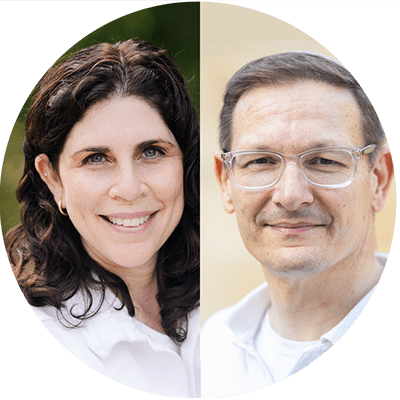
Student-Centered Learning in the Tanakh Classroom
For the past decade, educators have been using the term student-centered learning (SCL) but still finding it tricky and challenging to apply to the Tanakh classroom for a variety of reasons. One is the amount of time teachers must dedicate not only to teaching content but also to developing textual reading skills. Another is that teachers might feel reluctant to engage in a pedagogy they feel allows for too much free thinking and not enough respect for the mesorah, classical commentators, and tradition in general. Here we offer tips and strategies for how to introduce SCL into the Tanakh classroom in large and small ways. Differentiation and Social-Emotional Learning Are you differentiating in your classroom? Great! That’s one time-tested way to employ SCL in the Tanakh classroom.

Outside the Box: A Values-Based Approach to Parashat Hashavua
Tanakh in dialogueWhat position does the Tanakh occupy in the life of an early teen? For many, the Tanakh resides in the mental box into which school is commonly placed—a box of academic pursuits, Hebrew language and grammar, Jewish history and Biblical knowledge. There is nothing innately wrong with this, to the contrary, Tanakh study certainly can and does involve these important elements. But a missed opportunity arises when compartmentalisation precludes Tanakh from forming dialogue with the other “boxes” that rise to prominence in the early teen years.Early teenagehood is often marked by questioning and exploration as students begin a journey of seeking to understand that which may have previously gone unquestioned.

Building Tanakh Skills One Step at a Time With Manipulative Materials
“Give a man a fish,” the saying goes, “and you feed him for a day. Teach a man to fish and you feed him for a lifetime.” At Netivot, we have developed a Tanakh program that gives each child the personalized gift of feeding himself for a lifetime. The Montessori method is predicated upon the idea that each child, if provided developmentally appropriate opportunities, will inherently learn and grow and master at each phase of development according to his own individual needs. For this reason, in our classrooms, the expectation is not for children to memorize translations of text “chorally,” but rather to develop individually the skills to translate for themselves. Using key elements of the Montessori method, our students build a series of skills that allow them to tackle pesukim independently.

Bringing Nechama Leibowitz Into the Classroom
The written legacy of Nechama Leibowitz, in her gilyonot and books, has served and continues to serve as the basis for Torah study for many serious students of parashat hashavua, Tanakh, and parshanut. Her teaching methodology, as experienced by one of the authors of this article in 1988-89, in her weekly classes in her apartment in Jerusalem and in her weekly shiur at the Gruss Kollel, served as a model for how to teach Torah. Certain elements have been adapted, but we have found that her principle of encouraging independent thinking and individualized feedback gives students in middle school a personal connection with the text and empowers them to continue in their Torah study with positivity and self- assurance.
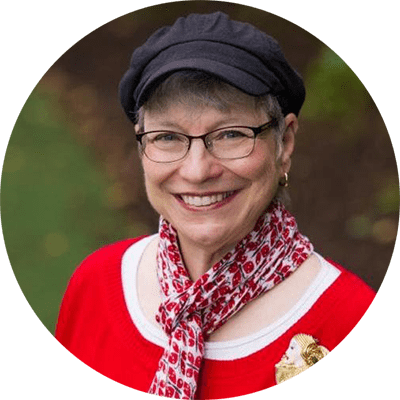
Opening the Middle School Window to Midrash
A number of years ago, when I was teaching the sections in Genesis about Abraham and Sarah to a girls’ middle school class, one of my students raised her hand and said, “I don’t like how much is missing in the Torah.” I asked her what she meant and she replied, thinking like a typical middle schooler, “Like, what did Abraham and Sarah talk about at night when they were just sitting around their tent?” After responding facetiously that Sarah probably asked Abraham what he thought about her new burka, I took the moment to answer the class seriously. This was a wonderful opportunity to deeply introduce my students to midrash as one way to fill in the “blanks” in the Torah text, to delve into the “spaces” in the text, and to teach us moral messages with which to inform our own lives.
Reach 10,000 Jewish educational professionals. Advertise in the upcoming issue of Jewish Educational Leadership.





